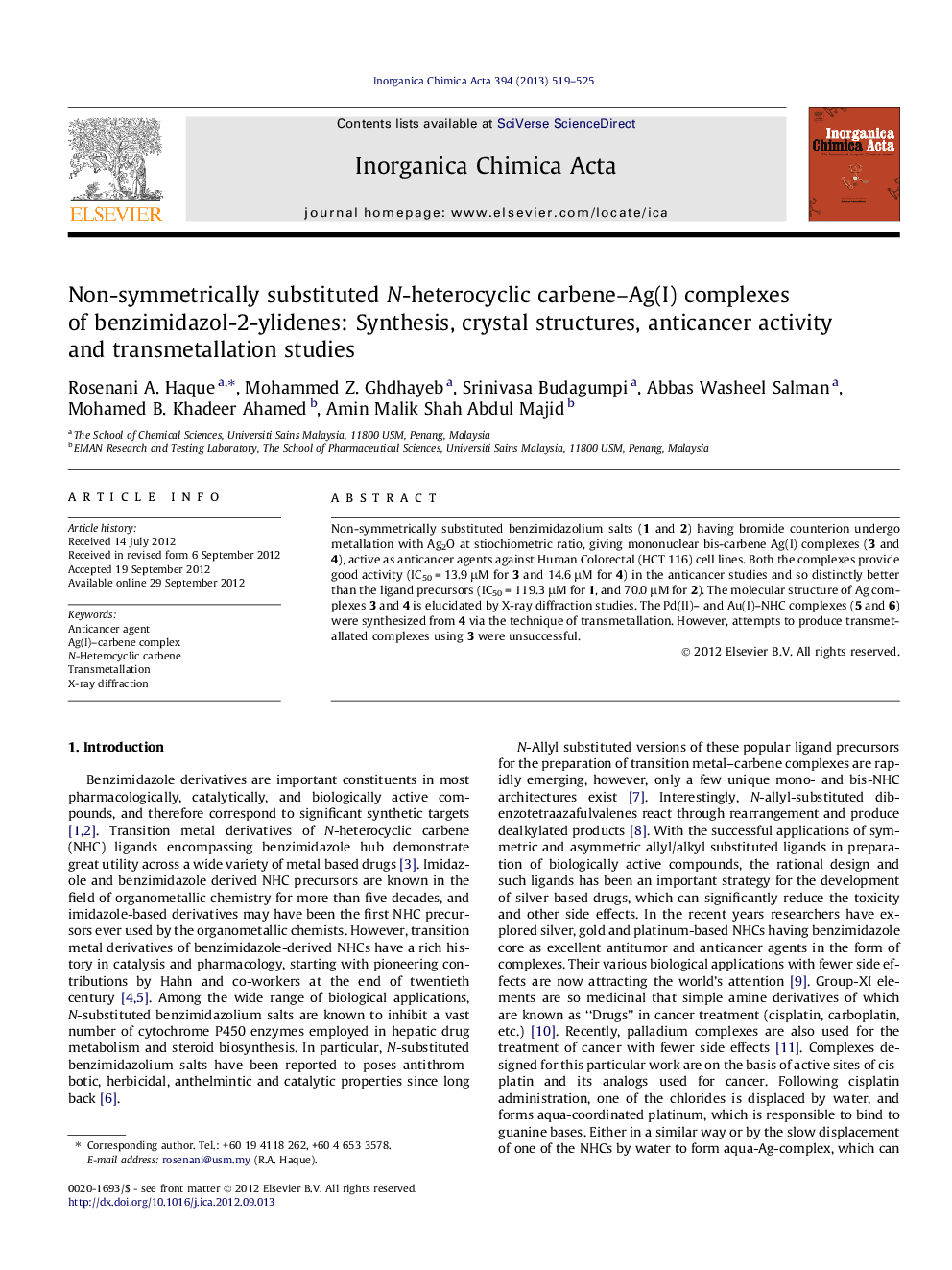| Article ID | Journal | Published Year | Pages | File Type |
|---|---|---|---|---|
| 1310615 | Inorganica Chimica Acta | 2013 | 7 Pages |
Non-symmetrically substituted benzimidazolium salts (1 and 2) having bromide counterion undergo metallation with Ag2O at stiochiometric ratio, giving mononuclear bis-carbene Ag(I) complexes (3 and 4), active as anticancer agents against Human Colorectal (HCT 116) cell lines. Both the complexes provide good activity (IC50 = 13.9 μM for 3 and 14.6 μM for 4) in the anticancer studies and so distinctly better than the ligand precursors (IC50 = 119.3 μM for 1, and 70.0 μM for 2). The molecular structure of Ag complexes 3 and 4 is elucidated by X-ray diffraction studies. The Pd(II)– and Au(I)–NHC complexes (5 and 6) were synthesized from 4 via the technique of transmetallation. However, attempts to produce transmetallated complexes using 3 were unsuccessful.
Graphical abstractAg(I)–carbene complexes of benzimidazol-2-ylidenes were prepared and examined for their anticancer activity against HCT 116 cell lines. Both the complexes exhibit 5–8 times stronger response than benzimidazol-2-ylidenes. Pd(II)– and Au(I)–carbene complexes were prepared from transmetallation.Figure optionsDownload full-size imageDownload as PowerPoint slideHighlights► Ag(I)–carbene complexes (3 and 4) of benzimidazol-2-ylidenes (1 and 2) were synthesized. ► All compounds were screened for anticancer activity against HCT 116 cell lines. ► Complexes 1 and 2 (IC50 = 119.3 μM for 1, and 70.0 μM for 2) exhibit good anticancer activity. ► Complexes 3 and 4 provide (IC50 = 13.9 μM for 3 and 14.6 μM for 4) 5–8 times greater activity. ► Pd(II)– and Au(I)–carbene complexes were prepared from 4 by transmetallation.
